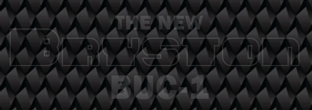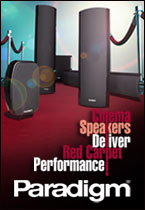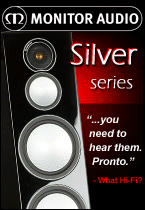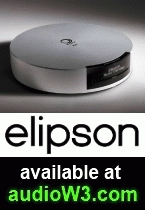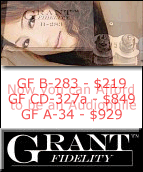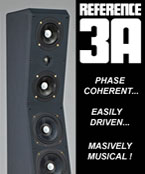
Your hard earned money goes out the door and in return a fine set of audio components settles on your equipment rack, with the promise of audio bliss. It doesn’t always work that way. Why not?
The great enemy of high fidelity reproduction is vibration. We all understand this when it comes to turntables, where floating suspension systems, enormous mass and magnetic bearings are just some of the approaches taken to reduce the effect of vibration. We must worry about vibrations coming from the components themselves (their motors, power supplies and so on) as well as the sound born vibrations coming from the speakers and even footfalls on floorboards. A whole industry has developed around this problem, and some of the solutions offered can be quite exotic, technologically advanced and expensive.
Today, we’re going to look at Sort Kones, a range of cone shaped objects from US cable manufacturer Nordost. You might ask yourself what has cable manufacturing to do with vibration control. There’s a simple answer to that. Pass energy though a conductor and that will induce mechanical vibration into the conducting strands themselves, a factor all cable manufacturers must deal with.
Sort Kones take a different approach from other vibration control devices. Nordost believes that the most dangerous vibrations are those that originate inside the components. Transformers, power supply capacitors, DACs, transistors and tubes all produce vibrations, and these vibrations occur just where the delicate signal flows. Ideally we would provide a path to remove all these vibrations from the equipment. Rather than isolating the components from the rack, which is the approach taken most commonly, Sort Kones provide a direct path to remove vibrations from the components and route them into the supporting rack, shelf or floor. If we can channel the vibrations created within the components away from the other delicate electrical circuitry inside the components, we allow them to perform optimally. That’s the plan, in simple terms. How does it work in practice?
Sort Kones are designed to support your components at three or more points instead of the feet that come standard. You put them, flat side down, underneath the component as close as possible to the power supplies and motors inside the box. You will need to know where these parts are so look for pictures on the internet of your amp, DAC or CD player with the lid off, or ask the manufacturer. You could also work by trial and error or by feel but the research effort is the best way. Nordost provides a detailed installation guide and we include a link here if you are interested.
www.nordost.com/default/downloads/SortKoneInstructions.pdf
Let’s take a look inside a Sort Kone (below).
You can see three distinct pieces inside the shell – a post, a base and a ball which couples the post to the ball. There is no soft material here to cushion the vibrations. The components are all very hard. Nordost offers four Sort Kone models, each built out of different materials. In ascending order of price, they are:
AS – aluminum post and base combined with a hardened steel coupling ball. $79.99 each
AC – aluminum post and base in combination with an upgraded Si3N4 ceramic ball. $99.99 each
BC – bronze post and base elements combined with a ceramic coupling ball. $164.99 each
TC – titanium post and base in combination with the ceramic coupling ball. $424.99 each
The post is in direct contact with the vibrating case of the component and channels that vibration to the base through the ball. The base dissipates that energy into the rack or platform below. Why not use just a single solid cone? Well a solid cone would transfer vibrations in both directions, while this more complex arrangement is designed to act as a diode, passing vibrations only in the downward direction. As you move up the range of Sort Kones, the materials used have a higher efficiency to conduct vibrational energy along their length – in short, they are more rigid.
So much for the theory. What do my ears tell me?
I started by elevating just the CD player (EMM Labs XDS1) and preamp (EMM Labs Pre2) onto the Sort Kones. With the AS model I could immediately hear a brighter, clearer and more dynamic sound, but noticed no improvement in the bass region or image depth. The AC model was a big improvement over this, offering a more refined and musical sound accompanied by a lower noise floor. Any brashness disappeared. The BC model took this a good deal further, giving greater delicacy and higher resolution, particularly in the bass. The TC model served also to prolong the decay of harmonics after the plucked note, and delivered higher dynamics all around.
Summoning up all my strength to lift the enormous ModWright KWA 150 SE power amp onto Sort Kones, I was rewarded with a further improvement in dynamics and a richer tonal palette. Extended listening to the TC model on the superb SACD sampler MAonSA revealed a greater presence to the piano tone, faster reflexes all round and a more spacious image, resulting in a major upgrade to the sense of live musicians in the room. Acoustic guitar was rendered with greater warmth, a longer sustain, a silent background and a palpable sense of ease. The music seemed to play slower, allowing all the detail to emerge with great clarity. Deep bass was firmer and more tuneful, and there always seemed to be power in reserve. Long runs on the piano showed a superbly even and colourful tone top to bottom.
Your results will probably be different from mine so you’ll want to try these at home before deciding. In some cases you may find a less expensive Sort Kone does a better job on a particlaur component, or you may run into an issue I had with my CD player with three Titanium Kones in a particular configuration. Although the sound through the speakers certainly improved, the disc drive produced increased levels of mechanical noise, perhaps a result of the tighter coupling to the shelf.
The performance of the least expensive AS model, good though it is, is so far exceeded by the slightly more costly AC model that I recommend you skip the AS model altogether. For most of us, it’s between the AC and the BC models. The AC will cost you from around $1000 to cover three components, and you can and should compare its effectiveness against any upgrade to cables or components you could get for the same outlay. The BC model is a big step up both in price and performance and represents the sweet spot in the range for the serious audiophile. It will really help you get the best out of your existing system. For those with high end ambitions, there’s no question the Titanium TC Sort Kone is a superb offering and may be worth the extra cash, but now you are talking somewhere in the $4000 range or higher (for three components).
If the price is a deterrent you can always buy a single set now, 3 or 4 Sort Kones, and support your digital source. It will give you the chance to try it under each of your other components in turn to see which should be targeted next.
In short, this is a thoroughly thought out and well executed range of vibration control devices. If you have the additional clearance needed on your equipment shelf to accommodate the 2.25 inch height of the Sort Kones, they can make a significant improvement to the sound, and unlike some other tweaks, they don’t rely on hocus pocus or the placebo effect to pull off that trick.
(508) 893-0100 or 1 -800-836-2750
Price: $79.99 (AS model), $99.99 (AC model), $164.99 (BC model), $424.99 (TC model)
Click here to discuss this article on the CANADA HiFi Forum







